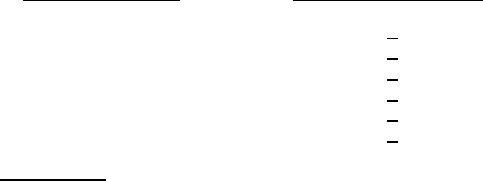 |
|||
|
|
|||
| ||||||||||
|
|  MIL-C-52437C
including all welds and fasteners. During the tests, all trailer chassis service lights, and if
applicable, the blackout lights, shall be illuminated, turn signals operated on turns, and hazard
warning operated during stops. The trailer chassis GVWR and payload shall be as specified in
table I. The apparatus minimum standard of accuracy shall not exceed the following:
Type of measurement
Percent of measured value
a.
Deceleration.
+2
b.
Force.
+2
c.
Linear dimension.
+1
d.
Speed.
+2
e.
Stress
+ 2.5
f.
Weight
+2
4.6.2.2 Stress analysis. Except for size 9, a stress analysis for the trailer chassis shall be
calculated and furnished, containing load, shear, and moment diagrams (see 3.4.1) both while
blocked up for equipment operation and while on its running gear. Compare the analysis with
the maximum allowable stress. Demonstrate the ability of the frame to withstand, without
permanent deformation, the operating stress, while jacked-up on stands, and the transported
stress, while being towed on the running gear. Begin by determining the payload, that amount of
weight allowance for the operating equipment and accessories and the correct payload
distribution, which is necessary for the trailer chassis to weigh-in at a value equal to the
maximum chassis GVWR cited on the manufacturer's VIN name plate. Further, determine the
test weight necessary to achieve 1.75 time this payload. The test weights shall be imposed on the
3-each operating equipment skid mounting crossmembers (see 3.11) or, in the case of size 32 and
others with a flat platform or special bodies, imposed over the most critical 8-linear-feet of the
bed area. Support the trailer chassis off of the suspension and tires. At first, support the trailer
chassis only on the drawbar front tow eye and on the points where the suspension attaches to the
chassis frame. Prior to testing, preload the chassis frame to 1.75 time the specified payload to
relieve stresses, then unload. Establish and record the dimensional relationship of trailer chassis
points at the lowest outside edges of the mainframe members, below the load bed, on both the
roadside and the curbside as follows:
Point A Frame height at drawbar-to-bed junction (normally, No. 1 crossmember).
Point B Frame height just ahead of end of frame.
Point C Frame height midway between points A and B.
Impose a test load of 1.75 times the specified payload and record all 6 points. Unload and record
all 6 points again. Compare the first set of record point measurements with the third set of
recorded measurments. Repeat this test with the trailer chassis only supported on the toweye and
the rear operating equipment leveling leg mount points to the chassis frame. If no permanent
deformation on any member of the trailer chassis has occured, the indicated trailer chassis
payload rating shall be acceptable.
77
|
|
Privacy Statement - Press Release - Copyright Information. - Contact Us |